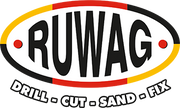How to Handle Dangerous Drilling Safety Risks
When it comes to using power tools, drilling safety should never be an afterthought. Whether you’re just starting out on your DIY journey or you use your trusty cordless drill on a regular basis, safety plays a vital role. With all of their versatility and even their general ease of use, drills give you the power to take on a huge range of projects, from simple to complex. Like any other power tool, they come with their own set of hazards. Understanding how to deal with drilling safety risks is crucial to ensure that small issues don’t turn into bigger, dangerous situations. In this guide, we'll take a closer look at the biggest key safety risks and how to handle them effectively.
Dealing With Drilling Safety Risks
Drilling may seem straightforward - even if you’re a total beginner who’s just bought your first drill. But experienced DIYers can also end up in situations that are dangerous and even life-threatening in some cases if safety measures start to be overlooked. Here’s how to keep small drilling safety risks from becoming big problems.
Choose the right drill bit for your project
This is something we advise frequently and for very good reason. There are many reasons to choose your drill bits carefully. Although performance, bit and tool lifespan and results are also affected by the bits you use, safety is one of the biggest things to consider. Using bits that are not suited to the material you are using can be extremely dangerous. For example, using an HSS bit for hardened metals without coolant or speed setting can lead to overheating and potentially snapping the bit, which poses a serious risk. Likewise, using a standard multi-purpose bit on material such as concrete could result in broken bits or slipped bits. Trying to drill into extremely tough material with the wrong bit makes it difficult to control your drill. Injury caused by slipped bits, flying debris or chips, sparks caused by overheating or drills jumping out of your hand as you work can be deadly. Besides taking the time to know your drill bits, always check the manufacturer's guidelines for the material hardness and proper usage.
Have an emergency safety plan in place
You’d be surprised how many DIY enthusiasts fail to have a proper safety protocol in place. This shouldn’t only include wearing the right protective gear. You should consider every possible risk - loose clothing, hair that could get in the way, scarves or jewellery that could get stuck, drills overheating, drill bits breaking, bits coming loose, drills slipping, and anything else that could potentially pose a risk. A good safety plan should include regular checks of your bits to check that they are not dull or in need of replacement. You can also consider emergency drills if you are working on large projects that involve heavy-duty work. Make a list of common drill-related accidents or risks. Consider what may happen in the event of problems. Keep a fully stocked first aid kit in your work area and keep emergency numbers somewhere visible. You can search for sample checklists online or develop your own custom plan based on the type of work you are doing. Taking a proactive approach can save lives.
Ensure that your workspace is safe
That brings us to our next point - your workshop. A safe workspace covers everything from the stability of the work surface to the security of the material you're drilling into and the organisation of your space. Always make sure that you work in a space that is ventilated, free of loose cords and other things that can be tripped over, flammable materials or anything else that could pose a risk. When drilling, use clamps or vices to hold materials firmly in place to prevent movement that could lead to injury. Regular maintenance of your work environment should include cleaning up after each project, ensuring that the next time you drill, the workspace is secure and safe.
Know your tools and use them carefully
Knowing your tools is vital. If you are new to working with a drill, you learn how to use it properly before you work on any projects. Understanding the uses and limitations of your drill and drill bits can greatly reduce the risk of accidents. This includes knowing the torque settings for different materials and the signs of wear on your bits. If a bit is showing signs of dullness, it's time to sharpen it or replace it to maintain efficiency and safety. Ignoring these signs can lead to excessive pressure application and potential breakage. Those with a lot of experience are not immune to problems, either. Being overly confident and skipping important safety measures to try and save time and effort can end up costing you way more than you realise.
Watch for early warning signs of trouble
Stay alert is key when operating any power tool. Pay attention to the sound of the motor. Any changes in the sound could indicate a problem that needs immediate attention. Regular inspections for signs of wear, such as frayed cords or loose components, are also crucial. If a drill bit jams or gets stuck in the material you are drilling, stop immediately and carefully release it to prevent the tool from jerking out of control. Sparks and smoke can be normal in certain cases but overheating is never good. Take the time to learn about signs that your drill isn’t working properly so that you can know how to avoid issues before they get worse.
Whether you're tackling a small home project or a planning larger renovation, having the right drill bits is essential. At Ruwag, we help you create a safer drilling experience with an extensive selection of high-quality drill bits to ensure that your toolbox is equipped to handle any challenge safely.

